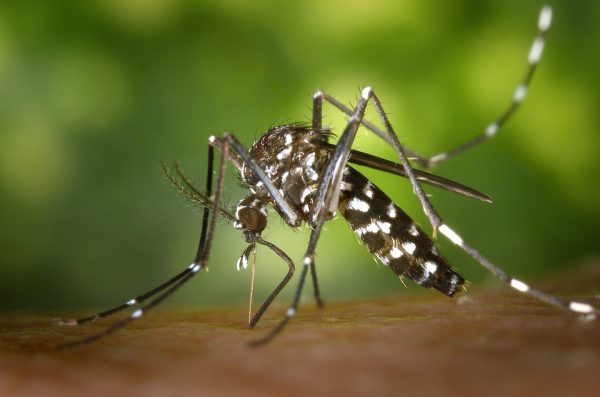Reliably detecting dengue fever
In compliance with the FTC guidelines, please assume the following about all links, posts, photos and other material on this website: (...)
Tiger mosquitoes are native to Africa and Asia. However, due to climate change and globalization, they are discovering new territories and are increasingly being found around the Mediterranean. With them they bring a host of diseases including dengue. Till date, there has been no full proof antibody test for detecting this virus. The good news is researchers have now developed a cost-effective and fail-safe test for detecting the virus.

About 20,000 people die from dengue every year, with hot areas such as Africa and Asia being the worst hit. Now that the tiger mosquitoes are also spotted around Mediterranean, several cases of people being infected with dengue virus are being reported in the south of France and in Croatia.
Due to lack of a full proof test, it is somewhat difficult to say for sure whether someone is suffering from dengue fever or are infected from another flavivirus, like yellow fever, West Nile virus or TBEV (tick-borne encephalitis virus). The tests available in the market cannot tell the difference between these individual flaviviruses. For a definitive diagnosis a sample of the patient’s blood has to be sent to a high-security laboratory for analysis. With handful of such labs in each country, it’s not practical to test everyone making it impractical to conduct tests at all.
Dr. Sebastian Ulbert, Head of the Working Group on Vaccine Technologies at the Fraunhofer Institute for Cell Therapy and Immunology IZI said that they have succeeded in developing the first ever antibody test for dengue infections that can distinguish between dengue and other flaviviruses. As this test is also based on detecting antibodies, it is cheap and can easily be integrated into existing test setups without any extra cost to manufacturers.
For conventional antibody tests the doctor draws the patient’s blood. In case, it is infected with the dengue virus, the blood will contain specific antibodies which the body produces to attack the intruder. A test platform is applied to the blood with dengue antigens that systematically bind with these antibodies. If after a set reaction time, antibodies are found on the platform, the doctor will assume that the patient has been infected with the dengue virus. The catch is other flavivirus also do the same. So, even if someone tests positive, one can't say for sure if it is a case of dengue.
Ulbert explained that for their test, they produced special antigens. Using certain point mutations, they altered the area of the antigens that is the same for all flaviviruses, effectively shutting them off. Antibodies are then unable to bind at these now non-specific sites, with the exception of the dengue-specific antibodies. If the test comes back positive, it is a 100% case of dengue infection.
It is understandable that demand for such a system is huge “ the reason is clear – dengue fever is one of the most commonly occurring diseases in the world, with some two-thirds of all people living in dengue danger zones.
The researchers are hopeful that their test will hit the market in a year time. To further their endeavor, the researchers are working on ways to differentiate between the four strains of the dengue pathogen. This breakthrough could be significant because anyone who has survived a dengue-related illness acquired immunity against that specific pathogen, but to the other three strains, that person is at even larger risk. This is due to the fact that the antibodies they produced to combat the first bout of dengue fever help the new virus to spread and make it much harder for that person to recover. Ulbert is of the opinion that their test is capable of differentiating between the four viral strains and it is time to put the theory into practice.
References:
https://medicalxpress.com/news/2016-01-reliably-dengue-fever.html
https://www.sciencedaily.com/releases/2016/01/160105101858.htm
